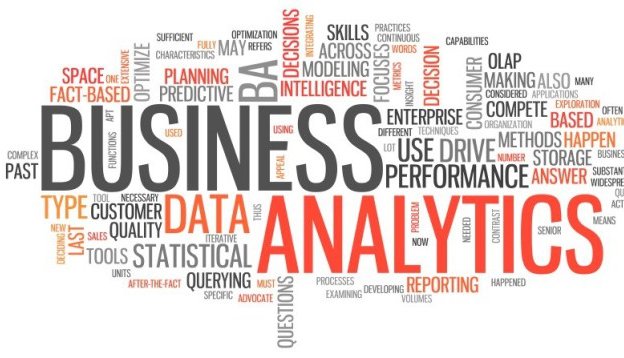Understand Why You Need an ERP System.
Maybe you are a growing company or a startup. Do you really need potentially expensive software? The answer – if you want to grow and stay competitive – is YES!
Gone are the days where you could get by with the number one ERP system in the world (Excel). It is true that many businesses still use Excel as their enterprise software. Often, these companies lose significant business to competition who have upgraded to current solutions. If you’re considering an upgrade to Dynamics 365, read our post on Dynamics AX vs. Dynamics 365.
If you want your business to slowly leak profits and not have the ability to make real-time decisions based on hard data, then you can stop reading here. You won’t hurt our feelings . . . you’ll just hurt your long-term bottom line.
Do you need a new ERP system?
We see it all the time – companies still using green screen (dumb) terminals with dreadfully slow loading times and inaccurate data. These companies have frustrated sales reps and employees, no ability to be mobile, ERP security issues, upgrade constraints because of customizations and worst of all, no support from the company that made the system in the first place.
The list goes on. If you experience any of this, you are a prime candidate for a new system that can help your business grow and compete in today’s market.
Business Analyst Role in organization
To understand the business requirements, integrate them with technology, and act as the bridge between various stakeholders. The business analyst job profiles are very lucrative, full of potential, and offer higher remuneration. Whether you are a professional business analyst or aspiring to be one.
Business Analyst plays a vital role in a project for an organization, The main role of a Business Analyst is to find out the need of an organization, finding out their problems, even predicting future issues to an extent, suggesting suitable solutions for the same and drive through the organization’s achievements.
The role varies from organization to organization, project to project and even from domain to domain.
BA in a project can play the role of a Business Planner, System Analyst, Data Analyst, Organization Analyst, Application Designer, Subject Area Expert, Technical Architect, etc.
Core skills include a good grip on system engineering concepts, leadership qualities, technical knowledge, writing, and verbal communications.
Their job may vary as per the employer’s requirement like some are limited to IT projects, even few of them extend their responsibilities to areas such as finance, marketing, accounting, etc.
How to be able to handle the changes to requirements?
As a Business Analyst, the first task will be to get a signature on a document by the user which states that after a point of time no changes to the requirements are accepted, In a few cases, if the changes to the requirements are accepted then:
Firstly, you will note down the changes made to the requirements and will prioritize them, I will also go through those changes and find out the impact of them on the project., you will calculate the cost, timeline, and resources required to cover the impact of change requirements on the project, And you will make sure that whether those changes affect or create gaps to functional design documents, testing or coding.
Steps in developing a product from a basic idea
n the process of developing a product from an idea, there are many steps to be followed as enlisted below,
Market Analysis: This is a business plan through which the characteristics of a market have been studied, like how the market changes and behaves dynamically.
Strengths Analysis: This is a process through which the Strengths, Weaknesses, Opportunities, and Threats of an organization are identified.
Personas: These are typical users of websites or intranet who represents the goals and characteristics of various large groups of users. Personas replicate the real users in functional design.
Competitor Analysis: Evaluation of the strengths and weaknesses of outside competitors.
Strategic Vision and Feature set: The process of developing the goals in present and planning to achieve the same in the future by moving towards the vision.
Prioritize Features: All the features of the product that is to be developed are prioritized by the product management to help the development team.
Apart from the above-mentioned steps, there are furthermore terms involved in the process of developing a product. , Storyboards, Test Cases, Monitoring, and Scalability.
Analysis techniques
techniques Analysis is a proper technique used in decision-making for Organization control activities and also used in tracing out the resolutions for defects. It is categorized as a decision-making technique based on its statistics that, with a limited number of selected inputs we can have a great impact on the outcome.
there are other analysis techniques is a powerful technique used in classifying the various types of customer requirements for new products.
The main attributes of analysis techniques
Threshold Attributes: These are the properties that a customer wants to be available in the product.
Performance Attributes: These represent some extra properties that are not necessary for a product but can be added for customer’s enjoyment.
Excitement Attributes: These are the properties that the customers are not aware of but are excited when they found such properties in their product.
Conclusion
Every organization hiring a Business Analyst wants to make sure that the hired professional should start contributing his valuable thoughts and ideas from the first day. The output of a work is utilized by IT people for developing the product and by the non-IT people to see the model of their application product.
and you should you have answer for down questions
What are the different roles in your organization those who interact with Business Analyst?
What kind of challenges should I handle in your organization?
What makes a Business Analysis successful in your company?
What is the process followed in your organization, a huge process or an informal process?
ERP Business Analyst Responsibilities and Duties
Support on functional aspect and help maintain custom components of ERP System.
Assist other team members by performing technical development work related to operational ERP System.
Interact with ERP System Application Development Group and users to determine project requirements.
Implement ERP System solutions for operations area through providing functional designs.
Provide routine production support through ERP business solutions.
Develop, record and maintain ERP System customizations and interfaces.
Analyze impact of patches and development work in other areas, on existing ERP System customizations, and coordinate their migration to production system.
Support and maintain HR systems and processes to meet business requirements.
Resolve issues and develop business solutions working with HR, Payroll, Finance and all ERP .
Manage medium to large sized HR systems projects like upgrade or system implementation.
Perform as subject matter expert for HR systems.
Perform continuously to improve system capabilities and business processes.
Conduct analysis sessions during implementation of Product.
Provide assistance to customer during integration testing.
Propose alternatives for any client’s request and manage project within original boundaries.


